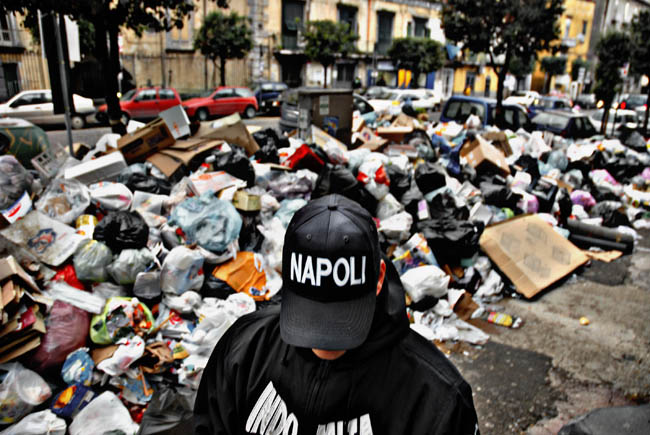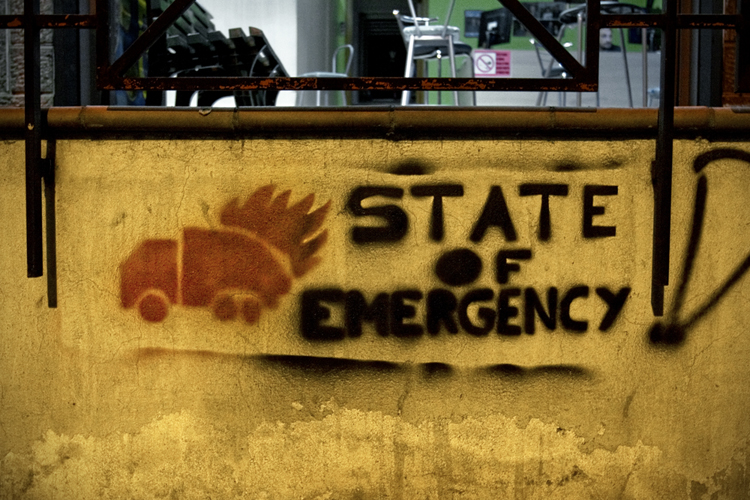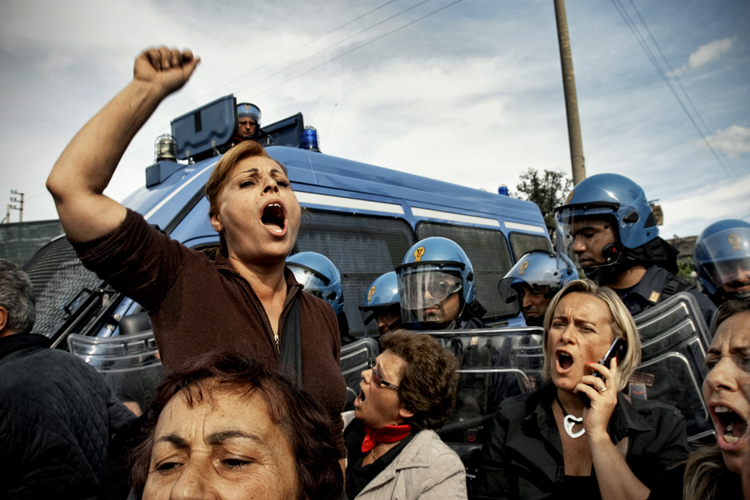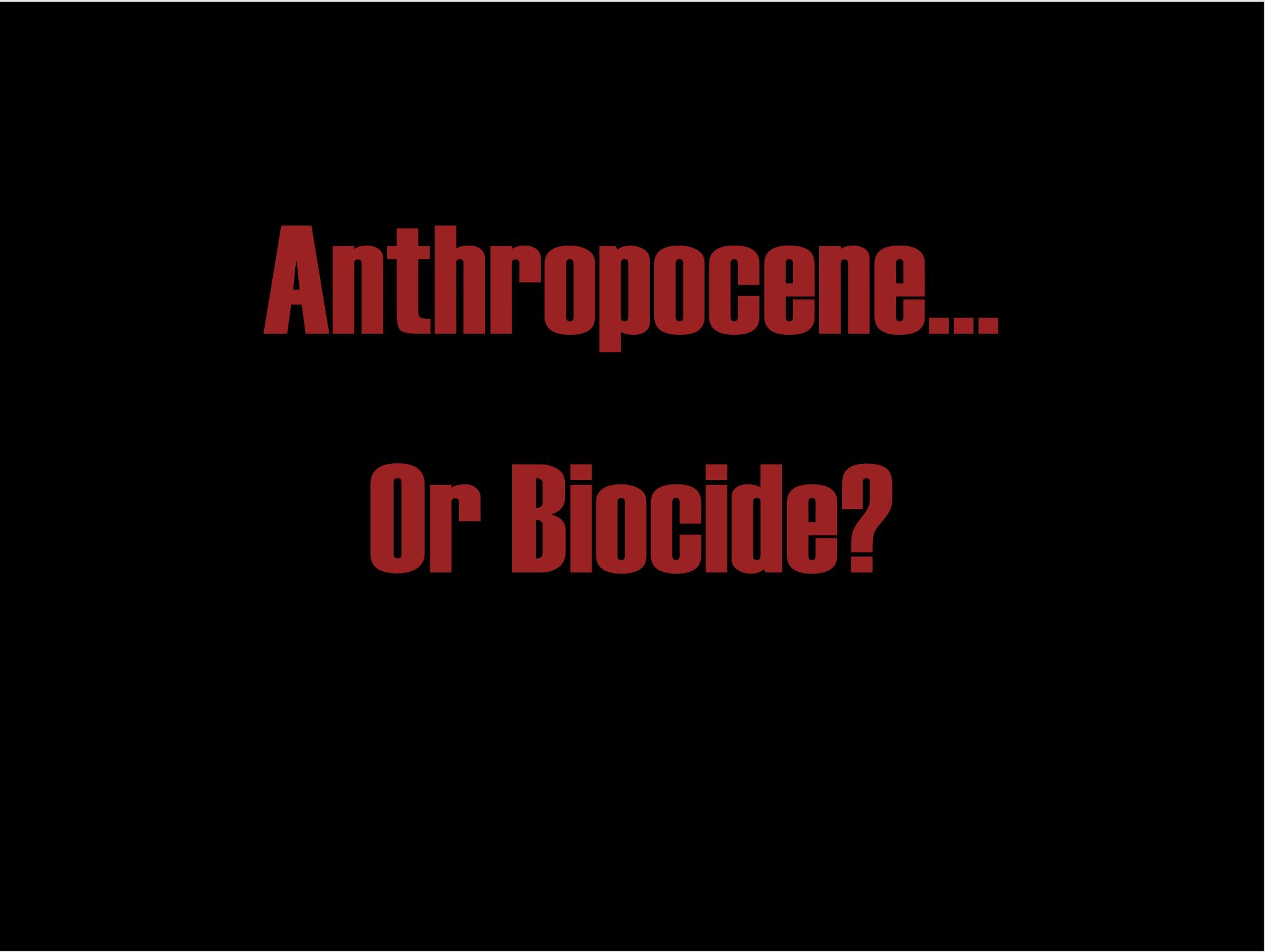by Salvatore De Rosa
This is a very personal account of an ethnographic immersion in the epicenter of an environmental conflict of huge proportions. That happens to be, at the same time, the place where I was born. It is an attempt at connecting the dots between individual existence, collective destinies and glocal ecological transformations.
Campania, anno 2016, Anthropocene has already shown up here as Biocide. But in the Zone we became Stalkers…
31 years ago, I was born in the trash. Not in a bin, not in the litter, not in a dump, but in all three mixed up and entrenched in a fertile countryside. I was born in Acerra, near Napoli, in the region of Campania, southern Italy, at exactly the half of the 1980s.

Photo credit: Eduardo Castaldo
In that place, at that time, a mix of deliberate will, flawed policies, industrial cycles, historical subordinations and economic fluctuations, conjured to make me live my childhood and youth amid mountains of trash. Uncollected garbage was next to the school where as a child I learned to read and write; industrial scraps laid abandoned in the fields where I was catching lizards as a teen.
My town was immersed periodically in the characteristic stench of burning tires and plastic. Trash was at sight when I gave my first kiss to a girl; and it was probably somewhere outside the room where I made love for the first time.
Such symbiotic relation with trash never felt good. We went about our lives occasionally wondering if it was saying something to us or something about us. We were slaloming on sidewalks to circumvent black plastic bags filled with our dinners’ scraps. We were shutting windows at night when smokes filled the air of chemical stench. We could not ignore that our land was being trashed; and soon we felt trashed too. When I turned 15, things had a sudden change. The government stepped in to impose “solutions”. Actually, one solution: pack everything and burn it all.

Photo credit: Janos Chialá
In 1994, in Campania it was declared a “state of emergency” for the management of urban waste. Emergency meant that the decisions over the design, the implementation and the localization of facilities for managing garbage were centralized, privatized, fast-tracked and beyond the reach of ordinary law. We were not consulted, and our opinion anyway didn’t count much: “for our own safety”, an army of police force in riot gear was sent to get the stuff in place.
The government and private investors’ plan was to wrap all the regional urban garbage into bigger plastic bags and burn it into a 600.000 tons per year incinerator. The “machine that destroys trash and turns it into energy” had to be built in my town, Acerra, just outside the urban belt, amid agricultural fields of artichokes, beans, peaches and cauliflowers. According to the same plan, landfills and storage sites were scattered in the map of Campania, following a path that in the minds of such cunning planners was supposed to be “of least resistance”: degraded neighborhoods of cities (supposedly ready to accept anything, even nuclear waste, if only street lightning or a public park was given to them in exchange) and marginal towns in the countryside (recipients of so many past promises of basic infrastructures, that a landfill could have seemed a sign of consideration from institutions and a preliminary step of developments to come). Places that could be seduced, in the best scenario, or blackmailed, in the worse. Or even just beaten on the head without much regret, if things went out of hand.

Map credit: Napoli Monitor
Places set to become the nodes of a regional infrastructural network for urban waste management, locking our future into recipients of trash. A machine calling for more garbage to be produced, and capable of producing impressive revenues for the private managers of facilities. In Italy, trash is considered a renewable energy. Like the sun or the wind, just smellier. Why reduce, reuse and recycle trash if one can make so much money by burning it instead?
Everything seemed to roll out for the investors. But they did a mistake: they did not consider us.
Campania grassroots movements were like the sand in the machine: we did not behave as the planners hoped. We aroused instead; we became insurgent communities.
We built coalitions between towns in Campania and linked with other places in Italy. We studied the waste management cycle, the composition of waste, the technologies, the potential dangers, the environmental conditions of our surroundings, and the health indicators in our area. We found out we were being fooled.

Photo credit: Janos Chialá
We realized that the definition of “trash” is only a convention to indicate all those things that our society fails to reinsert in metabolic cycles, or those scraps that designers of commodities failed to prevent. We learned that burning all the urban trash in the region was against EU regulations besides being against common sense. We also witnessed the plan miserably failing because of the incapability of the company that was too busy piling up the trash for future burning to realize that space was lacking. We joined forces, moving around where more landfills, more storage sites, more incinerators were planned. We proposed alternatives.
We were beaten, mocked, delegitimized, unheard, repressed. Some abandoned the fight. But those who stayed on the front-line grew stronger. Until… until it became clear that urban trash was just the tip of a toxic iceberg, and the less dangerous.

Photo credit: local activists
By researching our environment, we uncovered it had become also the terminal of toxic waste illegally disposed. Millions tons of toxic waste. A network of mafia organizations, corrupted public officials and industrial entrepreneurs had turned the flourishing countryside of Campania into a recipient of industrial trash.
Toxic sludge, residual of iron smelter, waste from hospitals, scraps from leather factories, paint sludge, exhausted batteries. Buried underneath the black fertile soil were deposits of unknown barrels. The source of the fires we smelled for years were scraps from unregistered factories. The landfills had been filled illegally with waste materials from industrial manufacturer of northern Italy. That’s why there was no space for the urban trash!
A sample of all production of the last thirty years had been disposed illegally so that businesses could save some money in their balance sheet. We were getting cancer and other diseases in unusual rates and a link with all that toxics stuffed in the earth seemed obvious. The government denied, minimized, and in the end it recognized something was wrong. But that only happened after the insurgent communities of Campania flooded the streets of Napoli with 100.000 bodies, shouting Stop Biocide, stop the killing of life.

Photo credit: Alessio Paduano
Let me tell you what we mean with Biocide, the killing of life…
My town is an agricultural center since more than 2000 years. Romans called the area Felix, Latin for happy, because soil is so fertile that requires little work and gives the best products. Sheep grazing was a common sight during much of its history. Small, beautiful sheep with candid wool and tasty milk. They were the first to start mutating.
It was the enactment of the worst nightmare of ecological fallout. Sheep with two heads, with the eyes in the wrong place, with legs too short or the spine too twisted. Sheep that had been grazing the fields from which our food was coming. We never felt so companion with other living beings as when we witnessed sheep dying in front of our eyes.
Their blood samples showed level of dioxins above any legal limit, above any limit of biological carrying capacity. Dioxin, carcinogenic and mutant compound. Real name: polychlorinated dibenzodioxin, the same used by USA in Vietnam in the infamous Agent Orange, the same spread in the air during the Seveso disaster. Now, it was also filling air and soil in the outskirts of my town. It was in the sheep, it was in their milk, it was around us, and probably it made its way inside us.
That’s why we named what we were fighting Biocide: it was not only trash we were fighting anymore, either legalized trash or illegally disposed; it was about saving life, our lives and those of our companion species.
What others are calling Anthropocene, it has already shown up in our town as Biocide.

Waste-filled biotas; contaminants traversing the food-chain; bio-accumulation and bio-magnification of chemical compounds troubling DNA’s transcriptions within living bodies, feeding unpredictable mutations; pollutants that traveled from far away and made their new home in our cells.
Isn’t all of this human-made radical socio-environmental change? Doesn’t all of this follow the lines of social discrimination and capital accumulation?
So, is Biocide part of Anthropocene or is Anthropocene just a more acceptable wording for what is really going on? After all, what do we care of geological eras, of human traces written into rocks that will be uncovered, if ever, thousands of years in the future?
To me, it seems that the main issue here is that “fossil-burning human beings seem intent on making as many new fossils as possible as fast as possible” like Donna Haraway puts it, talking about the mass extinctions we are witnessing nowadays.
Shouldn’t people be more concerned about the generalized loss of life happening right now, brought by the industrial capitalism apparatus on the dwellers of planet Earth? And who’s this “Anthropos” we invoke as the universal maker of Earth’s fate? Anthropos as human species means Anthropos is all of us, but then we should all be equally positioned to influence the geo-bio-chemical processes of planet Earth. It doesn’t seem the case.
Anthropos is blurry. Anthropocene risks depoliticizing, or even worse, it may recast the deep trouble many (not all) people are in, into a “good” era, where the same old “humans” that are now in control will produce “good” natures. Yes! Eco-modernists please tell us more about sustainable nuclear energy, geoengineering and genetic modifications that will make us breathe carbon dioxide!
In Campania, we do know the responsible people of the Biocide: we tracked them down following the political economy of waste mobilizations and immobilizations, the decisions, the policies, the criminal acts. We know their names and surnames. If life is being killed, then there must be a killer.
Shouldn’t the task of our times be to uncover, expose, and finally stop the killers of life from continuing their relentless acts on a planetary scale?
By fighting waste and contamination in a province of Europe, we realized that you cannot fight waste without fighting the system of production that lives of that waste: the very rationale behind producing all the stuff that is produced, behind utilizing chemical compounds for which there is no safe final disposal, behind continuously emitting & growing, and behind designating some places as the bearer of the dark side of production. By fighting waste, we understood we are fighting for something larger: a change on a planetary scale that would not only revolutionize what we produce and how, but especially the very relations of production and consumption.
By firmly resisting on the piece of Earth that gave us life, we above all recognized that our struggle is about the right to decide on how land, air and water are used, on the metabolism of places, on what passes through, grows upon and roots inside the metabolisms of collectives of living things, humans included.
It took a struggle outside the doorstep for the people in my town to leave behind individualism, fear and indifference and for joining others into becoming an insurgent community, starting with waste and ending up fighting for the right to life. Because, yes, things are all connected, but everything and everybody is somewhere and not everywhere; one needs to start smelling the air of her place and to track that smell back to the rotten that generates it.
Fighting in Campania made us develop the kind of skills we need in these troubled times. We learned how to sneak in the countryside following the traces of waste, how to find the source of fires, to understand at sight if that hill contains asbestos, paint sludge, car fluff…

Poster of the movie “Stalker” (1979) by Andrei Tarkovsky
We became like the Stalker in the movie of Tarkovksy. We can bring you safely in and out of the Zone, to the frictions of toxic ecologies, to the subconscious of the city, to the place where all desires are left to die but they never really die.
These are the skills for the Anthropocene, the skills we need to remade the relations with living and non-living things. The skills that we are developing in Campania. We sense the Biocide. Our senses told us to wake up and fight.
Because without fight, everything is going to stay the same; no, it will surely get worse. Maybe this is the most important lesson from our years struggling against waste and contamination. No one will save us: those in charge are too busy piling up waste as money and probably they already have a safe shelter, or are building a space-ship. The Anthropocene, or better, the Biocidecene, is the era of struggle. This is the character of this epoch, this is what is required so that more epochs will come after. Conflict is the soul of this era.
And the fight is for the right to stay in the place we are, as long as it is possible to stay, of course. Our task is to make the future again possible, starting from where we are or from where we go to survive. The fight for saving local webs of life is the first step to engage with the global entanglements making up our lives. It is the first step for beginning to generate an alternative culture and practice of bio-physical relations outside and against the destructive material and symbolic dominant apparatus.

Photo of Le Sorgenti del Riullo park, credit: local activists
In my town, we are envisioning how the future we want should look like. We reappropriated a small, apparently marginal piece of land, cleaned it, made it suitable for birds, fishes and people, turned it into a common space in the countryside where families can go and find beauty instead of trash: Le Sorgenti del Riullo. This park is a bastion in a war of position against competing forces aiming to use our territory for other purposes. We don’t envision it as a place separated from the rest. It is a point of departure, from which we have to grow and embrace further spaces and species, until connecting with other growing spaces of care and belonging. Until we’ll have constellation of reappropriated territories, archipelagos of Earth pieces subtracted to the Biocide. So that we will walk a path of growth together towards the future, rather than fading away with other species in the archives of geological strata.
A slightly different version of this text was performed in a reading at the Stories from the Anthropocene Festival, organized by Marco Armiero of the KTH Environmental Humanities Laboratory, in collaboration with the Rachel Carson Center and the Nelson Institute Center for Culture, History, and Environment at the University of Wisconsin, Madison.






Reblogged this on Political Ecology Network.